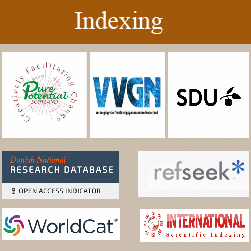Exceptional Design for an Adult Oral Health Screening Program, Qatar
Author(s):
Najat Abdrabbo Alyafei* and Sara Gibreel
Introduction: As a result of an increased life expectancy and reduced fertility, it is anticipated that by 2050 about half of the world’s population will be aged 60 years and above. This increased longevity has posed a challenge of adding health to life as progressive improvements in older people’s health that translate to longevity may be stalled. Physiological aging is usually associated with multiple chronic diseases, frailty, polypharmacy, and the loss of dependency and autonomy for daily living activities. Besides, reduced dexterity, impaired vision, and lower tactile associated with physiological aging pose an increased risk to oral hygiene. Furthermore, older adults, especially those with cognitive impairment, have more compromised oral health.
Aims and Objectives: The aim of this heuristic designed project is to screen all adult patients, including those with a history of chronic diseases living and seeking dental services at the public sectors and other sectors in Qatar. To improve the treatment of oral health diseases, the overall oral health of older adults, and to develop a data repository of oral diseases in the elderly population under one national umbrella for the first time in Qatar.
Project Design: This project is consisting of two tests, pre-test, and post-test design. The use of this design will allow us to understand the oral health challenges in Qatar. This screening’s expected outcome will reveal the critical factors and challenges that affect the oral health logistic system. It will also help in improving and identifying all oral health problems. Help in testing whether Qatar’s older population’s oral health screen effectively reduces the risk of poor oral health among this group. Oral health screening will be implemented as a regular intervention that will be delivered using the Oral Health Assessment Tool (OHAT) such as tongue, lips, saliva, dental pain, natural teeth, gums and oral tissue, and dentures.
Expected Outcomes: The project is anticipated to support the practical application and real operational status of healthcare settings. Besides, it is anticipated that this project will optimize the chances for maximum impact once the program is implemented. Furthermore, it is expected that the project will include an essential part for decision making, evaluation, and justifications and will also hold key evaluation features for program impact and monitoring. Another expected outcome of this project is its ability to document programs effectively and identify significant opportunities for improvement with collected data. Finally, it is expected that this project will result in a model outline that will be implemented in both Qatar and across the globe to help merge the public sector and other sectors’ dental health data on a national level.
Recommendation: Since the number of adults with a history of chronic diseases and have oral conditions is still unknown in Qatar due to the lack of a database, the authors recommend this project to help in building the background and database to assist dental practitioners, and policymakers develop specific and targeted programs that will support and provide treatment for the targeted population to improve the quality of life.



